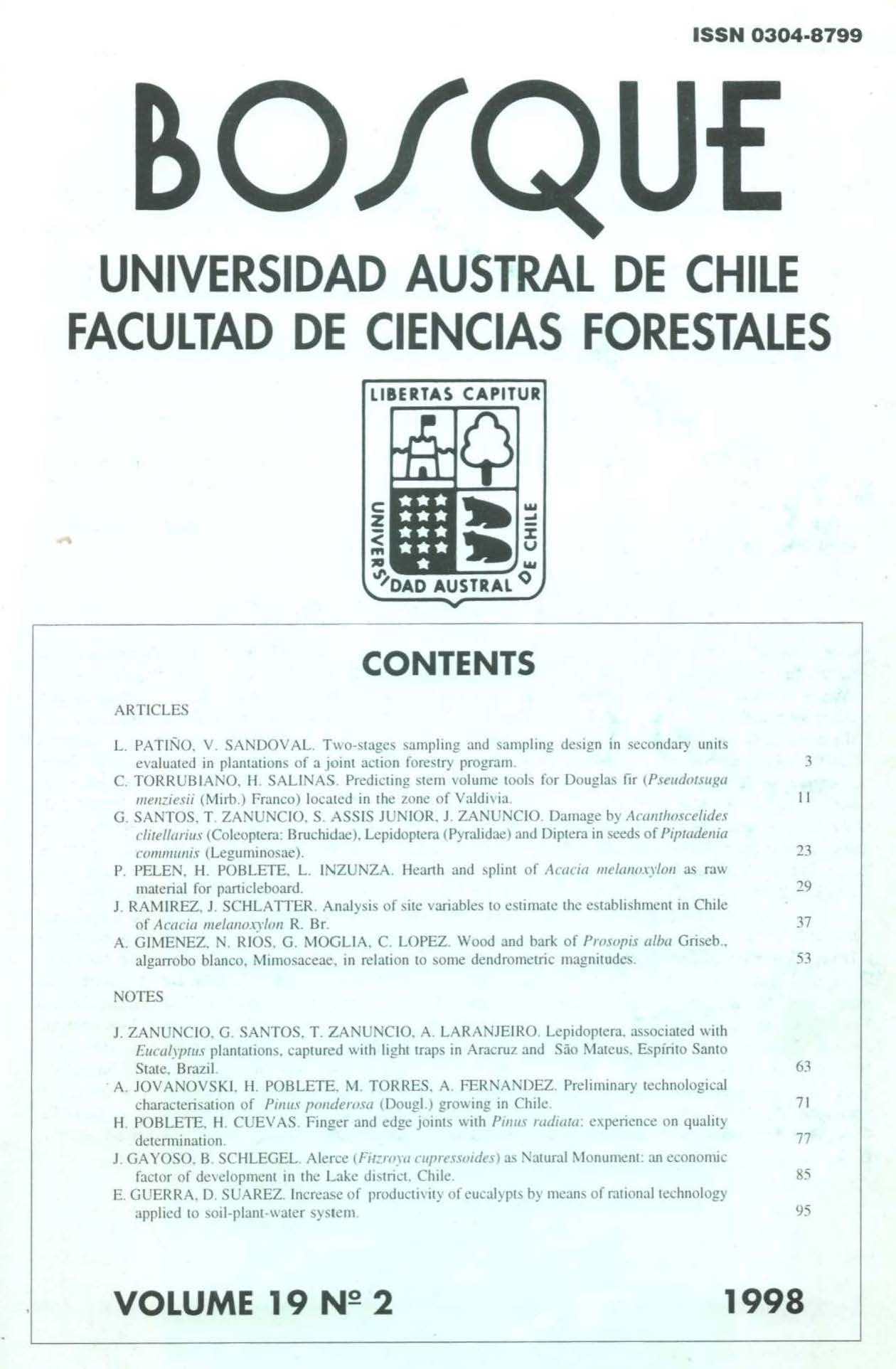Main Article Content
Dec 31, 1998
Abstract
This study evaluates the (a) two-stage sampling method applied (to) in the plantation inventory of the CORDECOIC-COTESU Forestry Program in Cochabamba, Bolivia. The sampling design considers 25 stands of Eucalyptus globulus as primary units. All of them selected with probability proportional to their areas. The secondary units consist of 400 m2 circular plots, randomly chosen, inside each stand. In the second stage, the study also compares the efficiency of four brute volume estimation techniques per unit.
The study concludes that the two-stage sampling method presents limitations in the control of the designed maximum error, even when the selection of primary units and the assignation of secondary units had an adequate adjustment towards the characteristics of joint action forest plantation. The study determines that sampling is the most efficient technique for circular plot levels, with the use of regression estimators.


